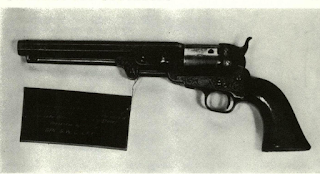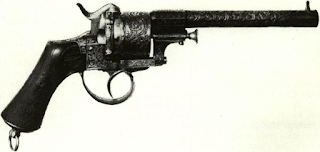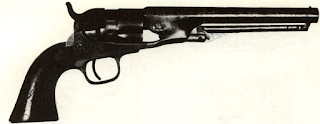While the G & G was purchased at about $50 each
I propose to establish the manufactury in or near to the
... I would not be justified in embarking in the business
Burton asked for an advance of funds scheduled at
On November 30, , the C.S. War Department
The plant was shifted to Atlanta in the summer and
These drawings may not have been of much use to
A new contract, taking into account the rise in costs
during the month of February, for this curious March
5, , contract specifies delivery of 600 guns in
The principal purpose of this contract seem to have
Burton’s insistence now that the contractor himself
Up to this time about 700 revolvers had been
The move of the Spiller & Burr equipment to Macon
Cost of manufacture at Macon of the Spiller & Burr
rons had saved their Confederate money invested in
Haiman Brothers, Louis and Elijah, fared less well
It is a little misleading to say, as Albaugh has
Haiman, as an old workman, David Wolfson of
The “two men” may be Burton and Spiller, of Richmond. That “every part was made by machinery” is
I propose to establish the manufactury in or near to the
... I would not be justified in embarking in the business
Burton asked for an advance of funds scheduled at
On November 30, , the C.S. War Department
The plant was shifted to Atlanta in the summer and
These drawings may not have been of much use to
A new contract, taking into account the rise in costs
during the month of February, for this curious March
5, , contract specifies delivery of 600 guns in
The principal purpose of this contract seem to have
Burton’s insistence now that the contractor himself
Up to this time about 700 revolvers had been
The move of the Spiller & Burr equipment to Macon
Cost of manufacture at Macon of the Spiller & Burr
rons had saved their Confederate money invested in
Haiman Brothers, Louis and Elijah, fared less well
It is a little misleading to say, as Albaugh has
Haiman, as an old workman, David Wolfson of
The “two men” may be Burton and Spiller, of Richmond. That “every part was made by machinery” is




Comments
Post a Comment